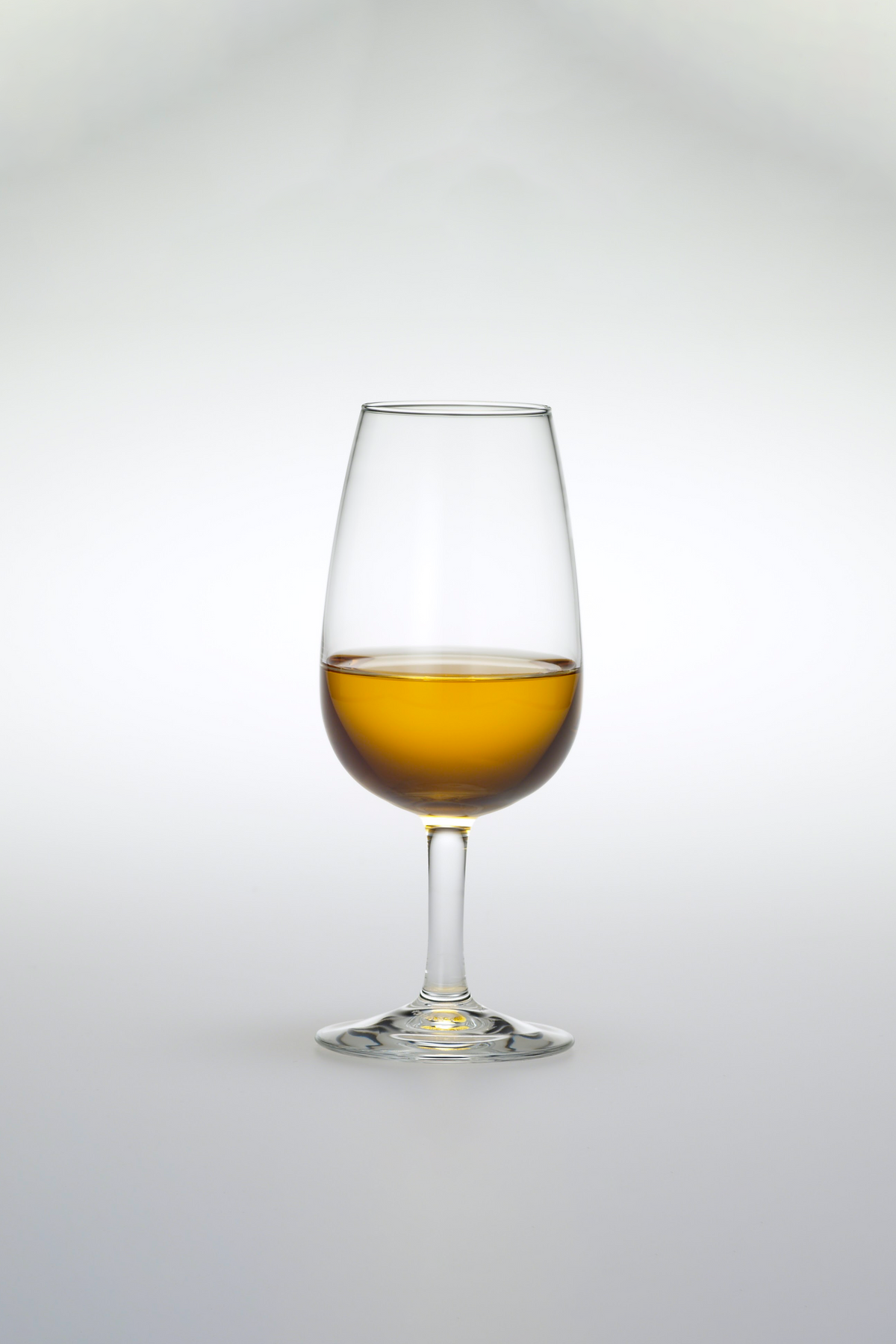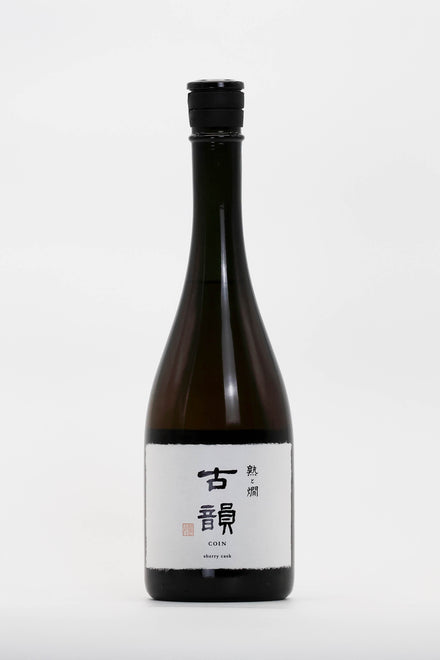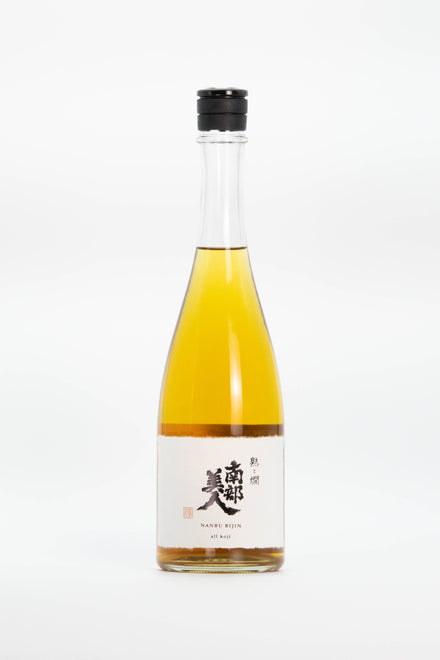

A sake that has been matured for a long time in sherry casks to create the perfect digestif. In addition to its wonderful aroma and pleasant sweetness, this is an original masterpiece from Sakematured.com that allows you to enjoy sake's inherent umami.
[Gift] Coin Sherry Cask
| Vintage | - |
| Years aged | over 10 years |
- 10 years or more
- 10,000 – 49,999yen
- 2010 or later
- All Products
- Gift suggestions
- Golden yellow
- With dessert and/or as an after-dinner drink
- 熟と燗オリジナル
- Brewer:Koyama Honke Sake Brewery Nadahama Fukutsuru Brewery
- Alcohol:25%
- Volume:720ml
Couldn't load pickup availability
[ Drinking alcohol under the age of 20 is prohibited by law. ]
This is a special Jyuku to Kan (sake matured)-exclusive product made with the cooperation of sake breweries from a selection of carefully selected Genshu (undiluted sake) matured in sherry casks for approximately 17 years and bottled.
In addition to the beautiful sweet aroma and pleasant sweetness derived from the sherry casks, it is infused with the umami taste unique to sake, making it the perfect after-meal drink or dessert accompaniment.
As it has a slightly higher alcohol content (25%) than regular sake, it is treated as a liqueur under the Liquor Tax Act. However, it is easier to drink than whiskey or brandy, which usually have an alcohol content of over 40%, so even those who don't like strong alcohol can enjoy it on the rocks or straight.
- about
-
Type liqueur Rice polishing ratio - Yeast type - Ingredients/raw materials Rice (domestic), brewed alcohol, rice koji (domestic rice) Rice type Domestic rice Origin of rice Hyogo prefecture Toji(Brew Master) - Assemblage -
- Recommended occasions/temperature
-
- How to store
-
- Delivery dates and charges
-
![[Gift] Coin Sherry Cask](http://sakematured.com/cdn/shop/files/448173584_3421709034639277_7098712280987166236_n.jpg?v=1719463027&width=1445)
![[Gift] Coin Sherry Cask](http://sakematured.com/cdn/shop/files/glass_3_2_4ac5fa27-0e6f-4976-8e5d-86279af0e22f.png?v=1756100552&width=1445)
Tasting comments
-
Nobuhiro Ueno
(Juku to Kan Bar Master / Permanent Director of the Toki Sake Association)Peat, roasted, woody, vanilla, complex but really pleasantly sweet aroma.
It's a drink similar to light whiskey or sherry, but with a strong rice flavor. There is no other sake-based liquor of this caliber, and it opens up a whole new worldview.
I definitely recommend giving it a try. -
Hidekazu Ishiwata
(Former National Tax Bureau Chief Appraiser)It has a hint of sherry on top and a rich ripe fruit flavor. There is no other sake that asserts such a strong oak aroma.
The fruity aftertaste is extremely long and rich. Can this be called sake? The debate will never end.
This is probably the kind of sake you would find in an "authentic" bar's lineup.
-
Akiko Toda
(Director of ITTEKI, Japan Sake and Meat Research Institute)Deep aromas of sherry casks, wood, vanilla and milk caramel.
It has the same rich aroma as whiskey, but because the alcohol content is not as high, it doesn't irritate the mouth as much, and the rich sweetness and subtle acidity gives it more purity. It's a drink that makes you take a deep breath and relax.
It's sake but not sake, creating a new genre of its own. This is my number one pick. -
Yuji Yamauchi
(Yushima Tenjinshita Sushi Hatsu 4th generation / 1st JSA SAKE DIPLOMA competition winner)A rare liquid that receives praise in every genre. Soft, flowery, yet deep and gentle.
The gorgeousness of the sherry casks, the fullness and the richness of the alcohol are irresistible.
It's sake definitive of this genre expanding the possibilities of this kind of amber color sake. It would be fun to have different versions aged in different barrels.
Brewer


Koyama Honke Sake Brewery Nadahama Fukutsuru Brewery
The current Nadahama Fukutsuru Brewery has been brewing sake here since the early Meiji period (around 1900), and was famous at the time for its brand name ``Daisekai.'' However, during the Great War in the Showa era, due to the government's corporate restructuring, they were forced to merge with Kiku-Masamune Sake Brewery. After the end of the war, in 1950, the company resumed its sake brewing business under the name "Fukutsuru". The storehouse was completely destroyed in the Great Kobe Awaji Earthquake of 1995. About a year later, in 1996, the brewery was rebuilt and the name was changed to Hamafukutsuru. This brings us to the present. Pursuing the essence of traditional Nada sake, we are a four-season brewery that never mass-produces sake and can provide fresh sake throughout the year.
Many alcoholic beverages that are loved around the world are aged in wooden barrels, just like wine and whiskey, to express their ``original and unique flavors.''
If brewed sake nurtured by Japan's rich nature is aged for a long period of time in Western liquor barrels, what kind of uniqueness will it produce? The time has come for us to mature.''We want to gather the framework of the techniques we have cultivated and create a Japanese Specialty Hard Liqueur that represents Japan.''
Then, in 2003, an unknown challenge began. Since then, many seasons have passed, and the unblended sake, which has undergone repeated training and maturation by the technicians, has transformed into a surprisingly ``beautiful sake with a deep flavor.''



